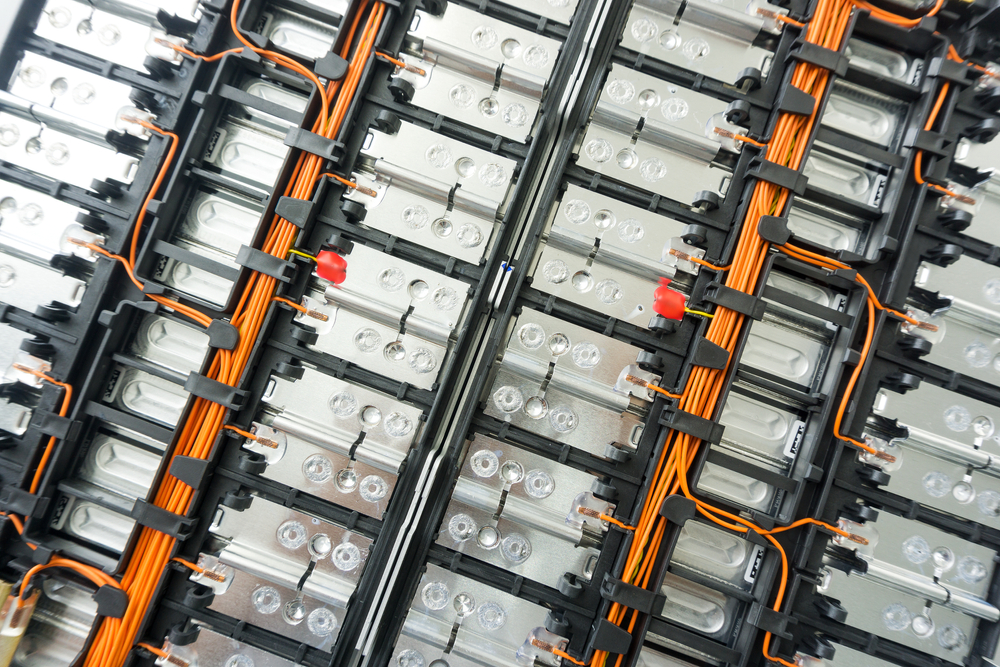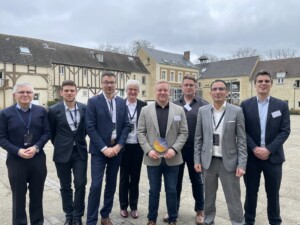High capacity silicon-carbon composites anodes increase energy density applications of lithium-ion batteries
Batteries for mobile phones and electric vehicles rely on graphite anodes that reached their performance limits. The current market expects new anodes alternatives. Therefore, one of the major challenges for Europe is to find efficient and sustainable substitutes for critical raw materials. SIRIUS project led by Nanomakers kicked off work to supply the highest performance and cost-efficient silicon material for the battery market and e-mobility by upscaling Nanomakers’ production capacity.
The idea was to secure the raw materials supply by working on two aspects. On the one hand, use silicon gas precursors to obtain silicon metal and the partial substitution of graphite. On the other hand, Nanomakers developed high capacity anodes to reduce the anode materials quantity in batteries.
The battery energy capacity can be increased by 30%
The goal of the SIRIUS (SIlicon nanopaRticles based composItes UpScaling) project was to develop high capacity silicon to meet requirements across the battery value chain. The new generation of advanced materials is built from carbon-coated silicon nanoparticles produced by Nanomakers. The material was assessed in commercial design Li-ion cells by Varta to validate their interest.
SIRIUS project enabled us to double our production rate for silicon for batteries. Therefore, our installed capacity for this product has been set at 10 t/y. We can meet more customers demands. We are now working on further production capacity increase projects.
Jean-Francois Perrin, CEO of Nanomakers
The battery energy capacity can be increased by 30%, thanks to nano-silicon’s highest performances at an industrial scale. This is made possible by the combination of several properties:
- Smallest size
- Narrowest particle size distribution
- Specific crystalline structure
- Tunable coating
Scaling up the production of silicon nanoparticles for Li-ion batteries
The success of the SIRIUS project is Nanomakers’ scale-up production of silicon nanoparticles for Li-ion batteries. With the Nanomakers factory in France, a production line’s capacity has been doubled using the existing equipment as much as possible.
Nano-silicon is the next must-have material for Li-ion batteries as it improves their energy storage capacity by up to 30% by using it in anodes.
Its use is already planned by all major battery makers and their clients in the automotive market. Nanomakers nano silicon material has excellent performance once integrated into batteries. To face the Li-ion battery market boom, production capacities have to be high and prices adapted. As laser pyrolysis is unique, its scale-up requires specific skills. The reactor capacity increase has been made possible by combining processes of numerical simulation as well as experimental work, so that CAPEX and OPEX have been reduced by 30%, making Nanomakers product even more competitive towards the lower quality materials available on the market.
Impacts of silicon use in batteries
A life cycle assessment has been made of the manufacturing and the use of silicon in electric vehicles batteries. The assessment compares the impacts of silicon use in batteries versus classical electric vehicle batteries and combustion engines. The overall impacts are positive (for the use of classical electric vehicle batteries versus combustion engines and silicon in batteries versus classical electric vehicle batteries). The result of the assessment shows that the use of silicon decreases by 25% the damage to human health, by 43% the damage to terrestrial ecosystems and by 24% the greenhouse effect compared to classical batteries. Moreover, the metal and fuel depletion is decreased by 13%. In parallel, the use of graphite, which is a critical raw material when natural, is decreased by 70% when silicon is used.
Connecting matters
EIT RawMaterials Innovation Community provided the SIRIUS project with the services that helped to reach the achievement. The SIRIUS project partners helped Nanomakers qualify its product in batteries with similar performances compared to the product made at lower productivity. EIT RawMaterials funding helped Nanomakers achieve this work on time, meet the clients’ demands, and keep a sustainable cash position vital for an SME.
Additionally, EIT RawMaterials provided opportunities to present the results of the SIRIUS project during dedicated events. This sets the basis for initiating new EIT RawMaterials funded projects within the Innovation Community like SILAPY (New silicon source for laser pyrolysis) and HIPERCO (High-performance Composite based on aluminium).
Thanks to the support of the large research facilities of CEA, Nanomakers prepared silicon particles with different surface layers to optimise the performance of the particles in batteries. In addition, CEA also tested some formulation and made comparative studies that enabled Nanomakers to validate the powder produced at higher productivity.
SGL Carbon prepared materials using silicon, and VMI tested the batteries. They also enabled Nanomakers to validate the powder produced at higher productivity and optimise its formulation for large scale use. For an SME like Nanomakers, the further support of other partners along the knowledge triangle is crucial to add capacity (personnel, equipment, know-how) to their in house expertise.




